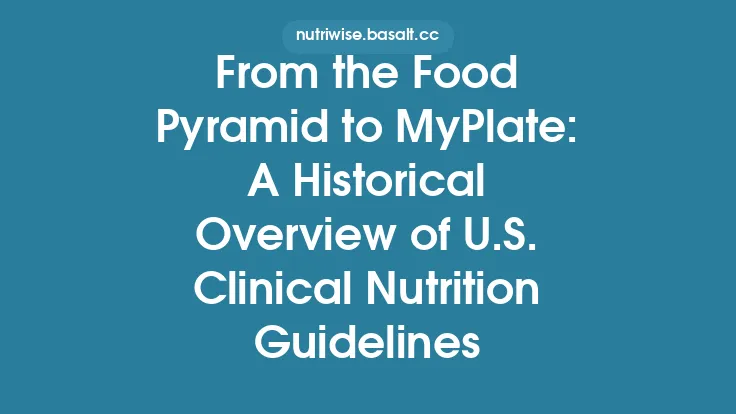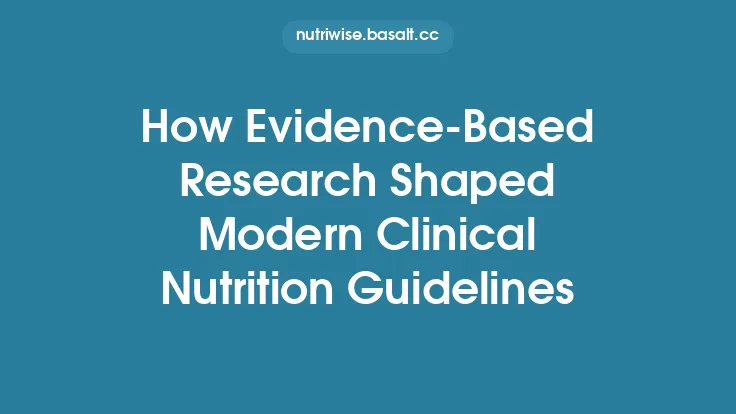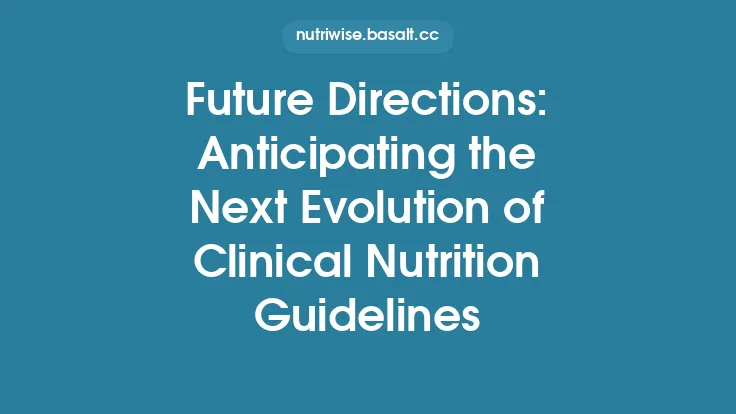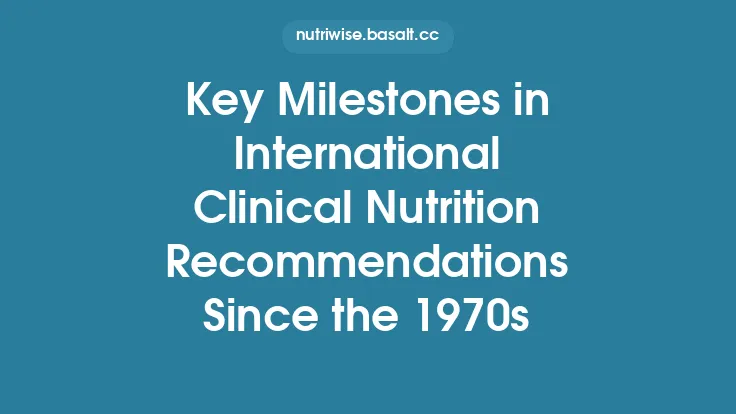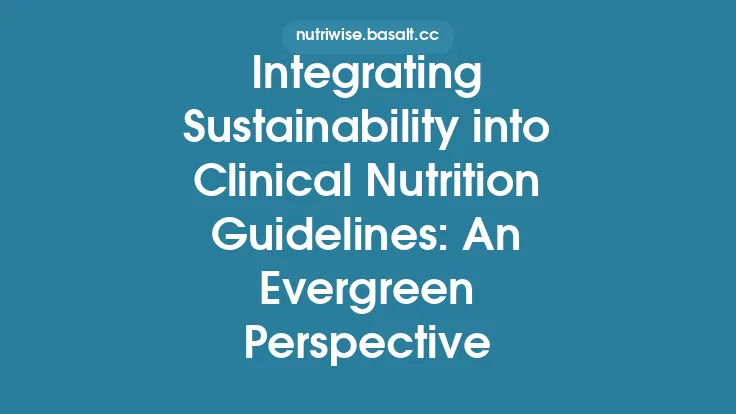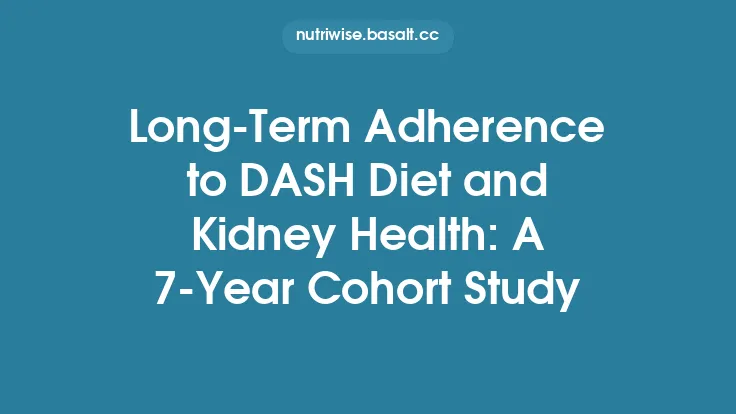Clinical nutrition guidelines are the product of rigorous scientific inquiry, expert consensus, and systematic review. Yet, the true test of any guideline lies in its translation from the pages of a textbook or a professional society’s website to the bedside, the clinic, and the home where patients make daily food choices. Over the past two decades, the nutrition community has accumulated a wealth of practical knowledge about how to bridge this gap. The following discussion synthesizes those lessons, offering an evergreen framework that clinicians, dietitians, health system leaders, and policy makers can apply regardless of the specific guideline version they are using.
Understanding the Guideline‑Implementation Continuum
Guidelines exist on a spectrum that moves from conceptual formulation → formal publication → dissemination → adoption → integration → sustained practice. Each transition point introduces unique challenges:
| Phase | Typical Barriers | Key Levers for Success |
|---|---|---|
| Dissemination | Information overload, limited access to full texts | Open‑access repositories, concise “quick‑reference” cards |
| Adoption | Clinician skepticism, perceived loss of autonomy | Peer‑led workshops, local champion endorsement |
| Integration | Workflow incompatibility, EMR limitations | Embedded order sets, decision‑support alerts |
| Sustained Practice | Staff turnover, evolving evidence | Continuous education loops, audit‑feedback cycles |
Recognizing where a health‑care organization sits on this continuum helps prioritize interventions that are both feasible and high‑impact.
Building a Multidisciplinary Translation Team
No single professional can operationalize a nutrition guideline alone. Effective translation teams typically include:
- Clinical Nutrition Specialists – interpret the evidence, adapt nutrient targets to patient sub‑populations, and develop individualized care plans.
- Physicians & Advanced Practice Providers – integrate nutrition orders into overall medical management, ensuring alignment with pharmacologic and procedural therapies.
- Nursing Staff – serve as the primary conduit for patient education, monitoring intake, and documenting outcomes.
- Health‑IT Professionals – configure electronic medical record (EMR) tools, create order sets, and develop dashboards for real‑time performance tracking.
- Quality Improvement (QI) Analysts – design measurement frameworks, conduct root‑cause analyses, and drive iterative refinements.
- Patient & Family Representatives – provide insight into cultural preferences, health literacy, and practical barriers to adherence.
Formalizing this team through a charter, regular meetings, and clear role delineation creates a sustainable infrastructure for guideline implementation.
Embedding Guidelines into Clinical Workflow
1. Standardized Order Sets
- What: Pre‑populated EMR templates that include nutrition assessment tools, recommended macronutrient distributions, and supplementation protocols.
- Why Effective: Reduces cognitive load, minimizes omission errors, and ensures consistency across providers.
- Implementation Tip: Pilot the order set in a single unit, collect usage metrics, and refine based on clinician feedback before system‑wide rollout.
2. Clinical Decision Support (CDS) Alerts
- What: Real‑time prompts that fire when a patient’s lab values, diagnosis, or medication profile suggests a deviation from guideline‑based nutrition care.
- Design Principles: Keep alerts concise, actionable, and tiered (e.g., “soft” reminder vs. “hard” stop) to avoid alert fatigue.
- Example: An alert that appears when a patient on high‑dose diuretics has a serum potassium <3.5 mmol/L, recommending potassium‑rich food options or supplementation per the guideline.
3. Nutrition Screening Integration
- What: Embedding validated screening tools (e.g., Malnutrition Universal Screening Tool, NRS‑2002) into admission workflows.
- Outcome: Early identification of at‑risk patients triggers automatic referral to the nutrition team, aligning with guideline recommendations for timely intervention.
Tailoring Guidelines to Individual Patient Contexts
Guidelines provide population‑level recommendations, but real‑world care must respect patient heterogeneity. The following strategies help reconcile the two:
- Phenotype‑Driven Adjustments: Use clinical phenotypes (e.g., sarcopenic obesity, renal insufficiency) to modify macronutrient ratios while staying within the guideline’s evidence‑based bounds.
- Cultural & Dietary Preference Mapping: Develop a repository of culturally appropriate food lists that meet nutrient targets, facilitating adherence without compromising guideline integrity.
- Health Literacy Adaptation: Translate technical nutrition language into plain‑English handouts, visual portion guides, and teach‑back scripts to ensure comprehension.
- Technology‑Enabled Personalization: Leverage mobile health apps that integrate guideline algorithms with patient‑entered data (e.g., weight trends, blood glucose) to generate dynamic meal plans.
Monitoring, Feedback, and Continuous Quality Improvement
A robust measurement system is essential for closing the loop between guideline intent and patient outcomes.
Core Metrics
| Domain | Example Metric | Data Source |
|---|---|---|
| Process | % of eligible patients screened for malnutrition within 24 h of admission | EMR audit |
| Process | % of nutrition orders aligned with guideline macronutrient targets | Order set compliance report |
| Outcome | Change in serum albumin or pre‑albumin over 7 days | Laboratory data |
| Outcome | Rate of readmission for nutrition‑related complications | Hospital administrative data |
| Patient‑Reported | Satisfaction with nutrition counseling (Likert scale) | Survey tool |
Feedback Loops
- Monthly Dashboards – Share performance data with the translation team and frontline staff.
- Plan‑Do‑Study‑Act (PDSA) Cycles – Test small changes (e.g., revised education pamphlet) and assess impact before scaling.
- Peer Review Sessions – Conduct case‑based discussions where clinicians present successes and challenges in applying guidelines.
Leveraging Education and Training
Sustained competence requires ongoing learning:
- Micro‑Learning Modules: Short, on‑demand videos (3–5 minutes) covering specific guideline components (e.g., protein needs in critical illness) can be accessed during shift breaks.
- Simulation Scenarios: Role‑play patient encounters that require rapid nutrition decision‑making, reinforcing guideline application under time pressure.
- Certification Pathways: Encourage staff to obtain credentialing (e.g., Certified Nutrition Support Clinician) that aligns with guideline expertise.
Addressing Systemic Barriers
Even with well‑designed processes, systemic issues can impede guideline uptake:
- Reimbursement Constraints: Advocate for policy changes that recognize nutrition interventions as reimbursable services, aligning financial incentives with guideline adherence.
- Supply Chain Limitations: Ensure that recommended therapeutic foods (e.g., high‑protein oral supplements) are stocked and readily available on the unit.
- Inter‑Professional Silos: Foster a culture of shared responsibility through joint grand rounds, interdisciplinary morbidity‑mortality reviews, and co‑authored care plans.
Case Illustration: Translating a Protein‑Target Guideline in a Surgical Unit
Background: A tertiary hospital adopted a guideline recommending 1.5 g/kg/day protein for patients undergoing major abdominal surgery to mitigate postoperative muscle loss.
Implementation Steps:
- Order Set Creation: Integrated the protein target into the postoperative nutrition order set, with default calculations based on the patient’s ideal body weight.
- Nursing Protocol: Developed a feeding schedule that staggered protein delivery across meals and oral supplements, documented in the nursing flow sheet.
- Dietitian Review: Daily verification of actual protein intake versus target, with automatic alerts for <80% achievement.
- Outcome Tracking: Measured handgrip strength on postoperative days 3 and 7; observed a 12% improvement compared with the pre‑implementation cohort.
- Iterative Refinement: Identified that patients with early return of bowel function were more likely to meet targets; adjusted the protocol to prioritize early enteral nutrition for this subgroup.
Lesson Learned: Embedding the guideline into multiple touchpoints (order set, nursing workflow, dietitian monitoring) created redundancy that protected against missed protein delivery, while real‑time data enabled rapid course correction.
Key Takeaways for Sustainable Guideline Integration
- Map the Implementation Journey – Clarify each transition point from publication to practice and allocate resources accordingly.
- Assemble a Dedicated Multidisciplinary Team – Leverage diverse expertise to adapt, embed, and monitor guidelines.
- Integrate Seamlessly into Workflow – Use EMR order sets, CDS alerts, and screening tools to make guideline‑concordant actions the path of least resistance.
- Personalize Within Evidence Bounds – Adjust recommendations for cultural, clinical, and literacy factors without deviating from core evidence.
- Measure, Feedback, Improve – Establish a data‑driven QI cycle that keeps the implementation effort dynamic and responsive.
- Invest in Ongoing Education – Provide bite‑size, accessible learning opportunities to maintain competence and enthusiasm.
- Address Systemic Enablers – Align reimbursement, supply, and organizational culture with the goal of nutrition‑focused care.
By treating clinical nutrition guidelines as living documents that require active translation, health‑care teams can ensure that the science of nutrition truly informs the everyday choices and outcomes of patients. The lessons outlined above constitute an evergreen toolkit—applicable across settings, patient populations, and evolving guideline versions—empowering clinicians to bridge the gap between recommendation and reality.
